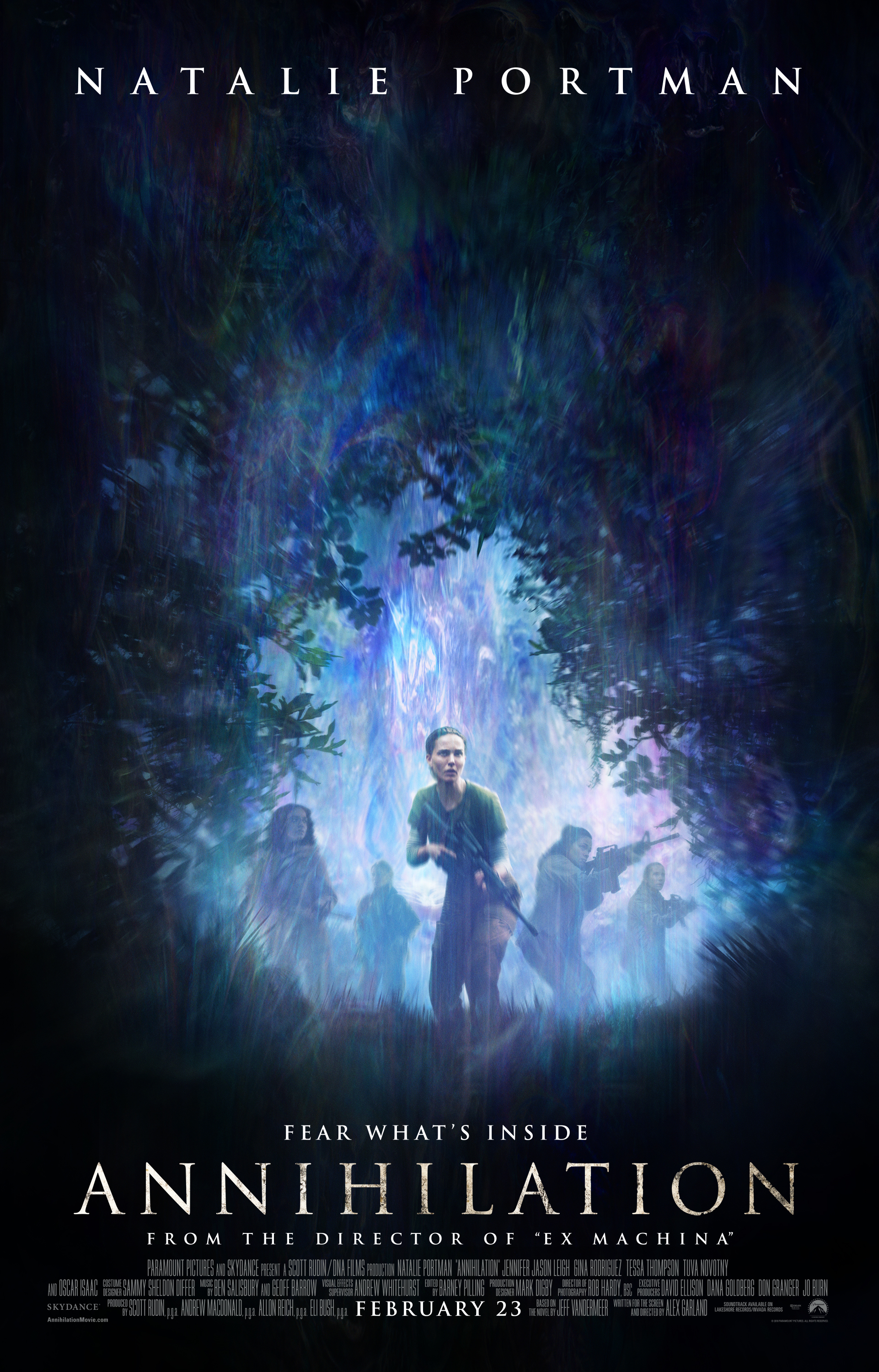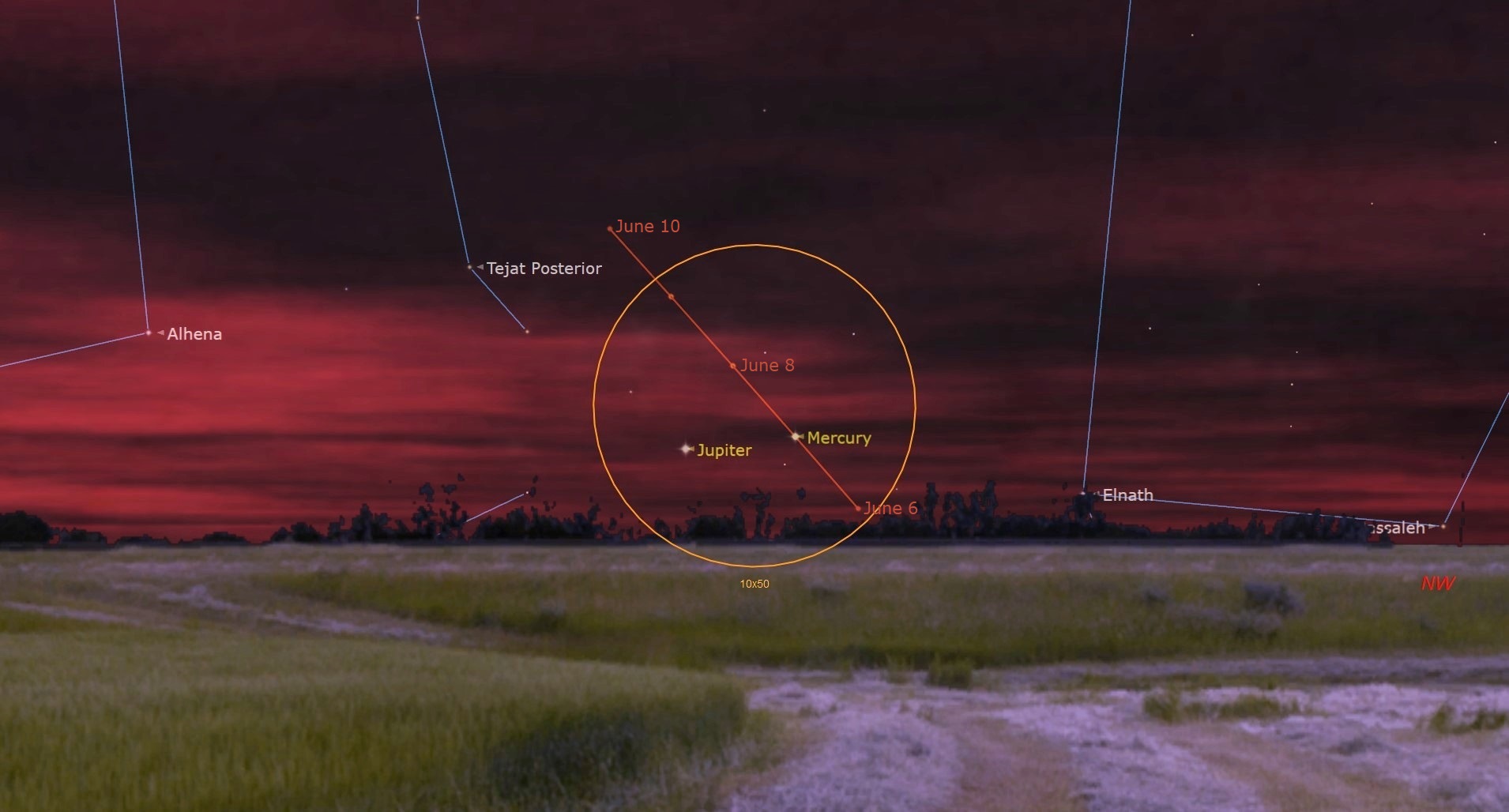'Annihilation' Is a Vividly Bizarre Sci-Fi Feast
This review contains minor spoilers about the premise of "Annihilation" (2018).
When a meteor slams down to Earth at the beginning of "Annihilation," you know the concrete cause of a strange "shimmer" that's slowly spreading to engulf a remote swampland and coastline. But knowing what happened then and knowing what's happening now are very different things. What, for instance, are the rules of the realm, from which (almost) nobody returns? Why is it spreading? And, most important, What now lies at its dangerous epicenter?
In "Annihilation," which hits theaters today (Feb. 23) in the United States, you'll be drawn in less by the plot and the specific characters than by seeing what's around each corner — and what strange variations and perturbations of nature the movie will play with next. It's a science-fiction horror film — so you might find yourself covering your eyes, but peeking out because you're never quite sure whether something terrible or something wonderful (but foreboding) will cross the screen next. [Biggest Space Movies to Watch in 2018]

The movie is directed by Alex Garland, whose psychological robot thriller "Ex Machina" played with science fiction conventions back in 2015. In this movie, he draws from survival and horror tropes to delve into a strange, vivid world.
The audience follows Natalie Portman's character, Lena, a biologist and former soldier who's taken to a base at the edge of the Shimmer after her husband, Kane, played by Oscar Isaac, somehow breaks out of its iridescent borders. Lena joins a team of four other scientists determined to get inside, reach the center and return alive with samples and analyses that could perhaps help stem the region's spread. Through their journey, they begin to unravel what's happened to the organisms within the Shimmer. (No surprise, it relates to Lena's research.) And it becomes clear that, although the film's few jump-scares mostly relate to large creatures, it's the small changes they have to worry about most.
Interwoven with this story are looks into Lena's past and her life with Kane, which provide tangible breaks from the weirdness, but the side plot they offer is not particularly intriguing. In addition, the Shimmer's psychological effects on the five women are less powerful than they could be, because the film doesn't spend a lot of time filling out their characters.

But it doesn't matter much: The film is really all about the physical journey, and the moments at the center of the Shimmer are something that will stick with this reviewer for a long time. (The sound design, animation and pacing come together to elevate those final moments.)
Get the Space.com Newsletter
Breaking space news, the latest updates on rocket launches, skywatching events and more!
I haven't read Jeff VanderMeer's novel, which the movie was based on. That novel is the first in a trilogy, although it sounds like there's been enough divergence here that any future movie would be pretty far afield from the source material. But based the work I have read by VanderMeer, I suspect this must have been a challenge for the movie's creators to adapt. Rather than striving for an exact accuracy, the film plays to the medium's advantages, with a very visual, tense journey and a cinematic ending that the author himself has said is mind-blowing, although different from the book's. (VanderMeer was not involved in the movie's development.)
The film is a strange, gory, baroque and ambitious journey through an otherworldly realm — and for lovers of the bizarre, it's well worth a watch.
Email Sarah Lewin at slewin@space.com or follow her @SarahExplains. Follow us @Spacedotcom, Facebook and Google+. Original article on Space.com.
Join our Space Forums to keep talking space on the latest missions, night sky and more! And if you have a news tip, correction or comment, let us know at: community@space.com.

Sarah Lewin started writing for Space.com in June of 2015 as a Staff Writer and became Associate Editor in 2019 . Her work has been featured by Scientific American, IEEE Spectrum, Quanta Magazine, Wired, The Scientist, Science Friday and WGBH's Inside NOVA. Sarah has an MA from NYU's Science, Health and Environmental Reporting Program and an AB in mathematics from Brown University. When not writing, reading or thinking about space, Sarah enjoys musical theatre and mathematical papercraft. She is currently Assistant News Editor at Scientific American. You can follow her on Twitter @SarahExplains.
